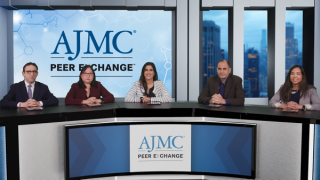
Acute Lymphoblastic Leukemia/Acute Myeloid Leukemia
Latest News

Latest Videos

CME Content
More News

Amir Fathi, MD, discusses one of the biggest nonfinancial barriers to bispecific therapies: the expertise required to safely administer and manage them.

Revumenib is now the sole targeted therapy recommended by the National Comprehensive Cancer Network for KMT2A-rearranged acute leukemia, which opens a path for payers, said Ivo Abraham, PhD, RN, of The University of Arizona.
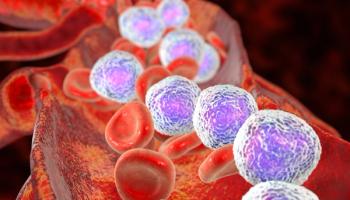
Obecabtagene autoleucel showed over 70% response rates in relapsed/refractory B-cell acute lymphoblastic leukemia (B-ALL), demonstrating efficacy across all age groups in recent trials.

Collaborations between academic and community cancer centers enhance access to care, with success in acute myeloid leukemia and precision oncology.

AZD0486 demonstrated encouraging safety and dose-dependent efficacy in heavily pretreated adolescent and adult patients with relapsed/refractory B-cell acute lymphoblastic leukemia (ALL), according to early findings from the phase 1/2 SYRUS trial and Ibrahim Aldoss, MD, of City of Hope.

Revumenib, an oral targeted therapy for rare leukemias, is projected to be cost-neutral for health plans over 3 years, primarily due to lower administration costs and improved patient quality of life, said Ivo Abraham, PhD, RN, of The University of Arizona.

Ibrahim Aldoss, MD, discusses the potential of AZD0486 for treating relapsed or refractory B-cell acute lymphoblastic leukemia (ALL) and outlines the SYRUS study objectives.

Caregivers and patients with acute leukemia face unique challenges, prioritizing treatment preferences that impact quality of life and emotional well-being.

Revumenib for relapsed/refractory acute leukemias with KMT2A translocation is cost-neutral for health plans, but traditional methods of analysis may not be accurate for rare diseases, said Ivo Abraham, PhD, RN, of The University of Arizona.
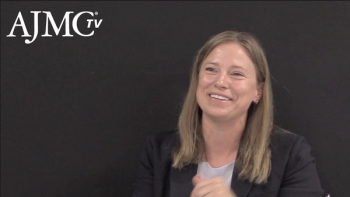
The Beat AML Master Trial found high remission rates and promising safety with triplet therapy in patients with acute myeloid leukemia (AML), according to Ashley Yocum, PhD.

High body mass index affects outcomes in acute lymphoblastic leukemia (ALL), highlighting the need for targeted interventions to improve patient survival rates and treatment efficacy.
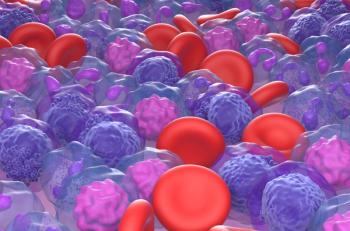
Revumenib shows promise for high-risk patients with acute myeloid leukemia (AML) with specific genetic mutations, demonstrating efficacy with no new safety signals.

A new genomic testing algorithm enhances turnaround times for acute myeloid leukemia diagnostics, improving treatment decisions and patient care quality.

Adolescent and young adult (AYA) patients with acute lymphoblastic leukemia (ALL) face significant survival disparities and unmet needs for effective third-line treatments, highlighting urgent care gaps.

Second of 2 parts featuring an interview with Stephen Strickland, MD, MSCI,director, Leukemia Research for Sarah Cannon Research Institute. Strickland recently presented data from a phase 1 trial of SENTI-202, an investigational chimeric antigen receptor natural killer (CAR NK) cell therapy. Toxicity with this therapy is lower than seen in many conventional CAR T-cell therapies.
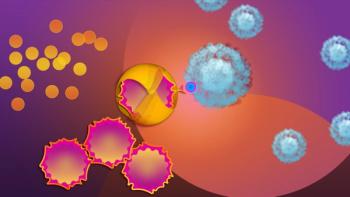
For Patients Who Cannot Wait, This Off-the-Shelf CAR NK Treatment for AML Leaves Healthy Cells Alone
First part of a 2-part interview with Stephen Strickland, MD, MSCI, director of leukemia research for Sarah Cannon Research Institute. Strickland recently presented data from a phase 1 trial of SENTI-202, an investigational chimeric antigen receptor (CAR) natural killer (NK) cell therapy.

The FDA approved treosulfan in combination with fludarabine as preparation for allogeneic hematopoietic stem cell transplantation (allo-HSCT) in adult and pediatric patients with acute myeloid leukemia (AML) or myelodysplastic syndrome (MDS).


Two posters presented at the 2024 American Society of Hematology meeting reported real-world outcomes data for patients treated for pediatric acute myeloid leukemia (AML).

There are a number of considerations both in the short and long term to consider when making treatment decisions for younger patients with myeloproliferative neoplasms (MPNs).

A national survey of Canadian hematologists reveals gaps and variability in supportive care strategies for older adults with myelodysplastic syndromes (MDS) and acute myeloid leukemia (AML), emphasizing the need for evidence-based guidelines.

Recently recognized by the World Health Organization, acute myeloid leukemia (AML) with t(7;12)(q36;p13) has previously been associated with MNX1 and ETV6 signaling, although MNX1::ETV6 fusion transcripts have only been confirmed in approximately half of cases.
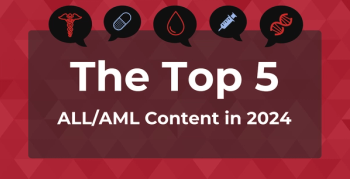
New treatments and adverse events impacting patient quality of life were among the topics of interest in 2024.

The meta-analysis found indications that autologous stem cell transplantation (ASCT) is associated with higher rates of disease-free survival and relapse-free survival, as well as lower rates of relapse compared with chemotherapy after patients achieved their first complete response (CR).

Phase 2 data show about half of patients with high-risk or secondary acute myeloid leukemia achieved a complete response or complete response with incomplete hematologic recovery after one or two cycles of induction therapy with CPX-351.










































